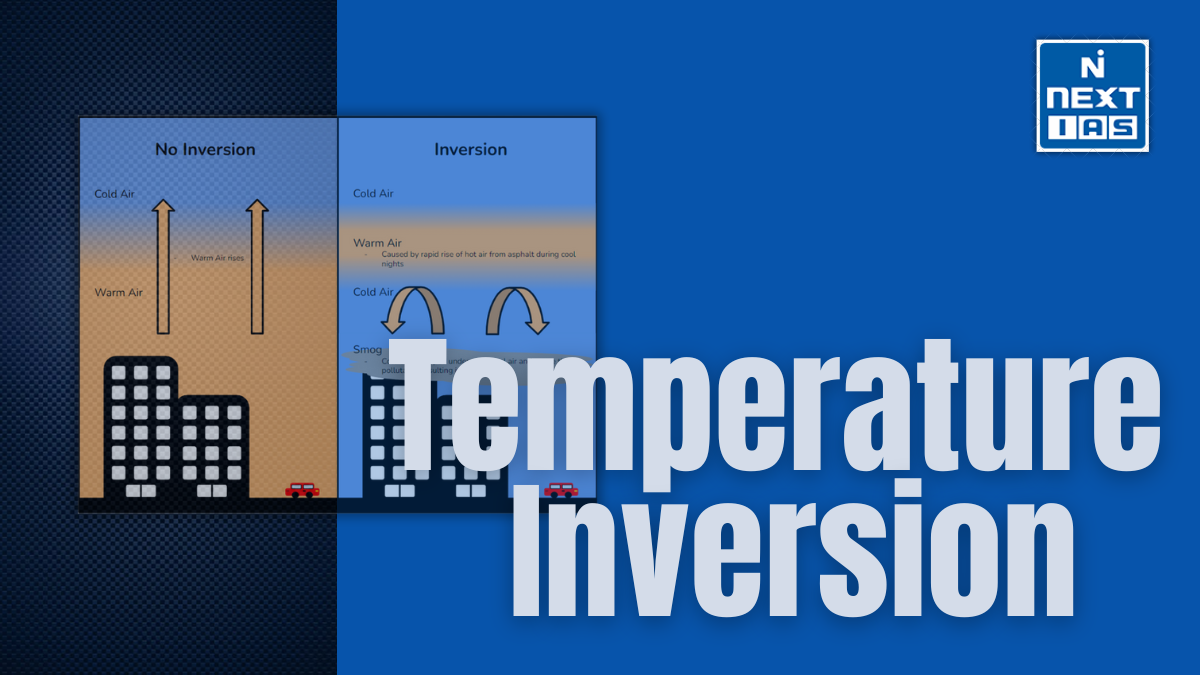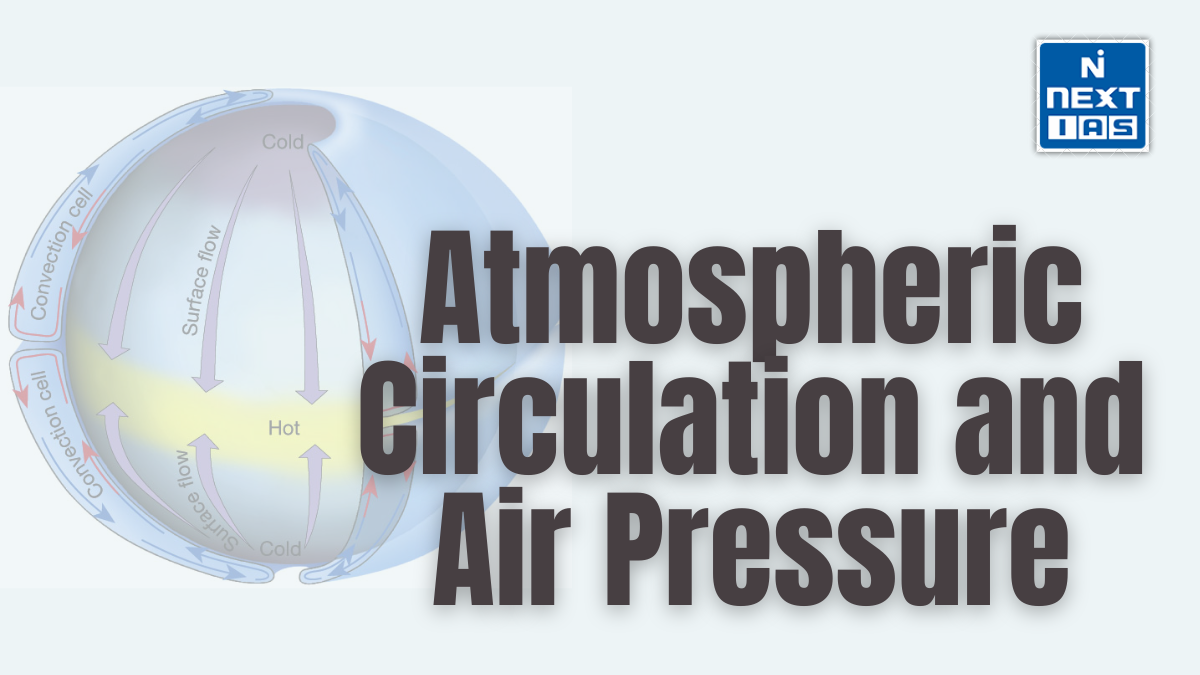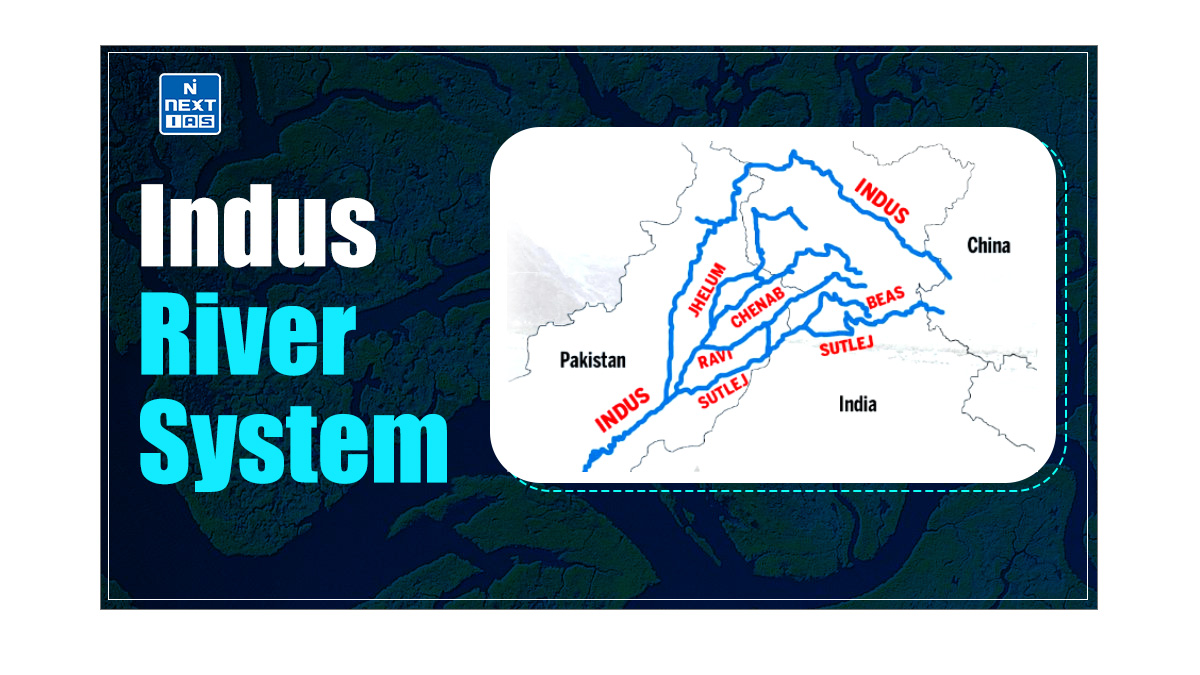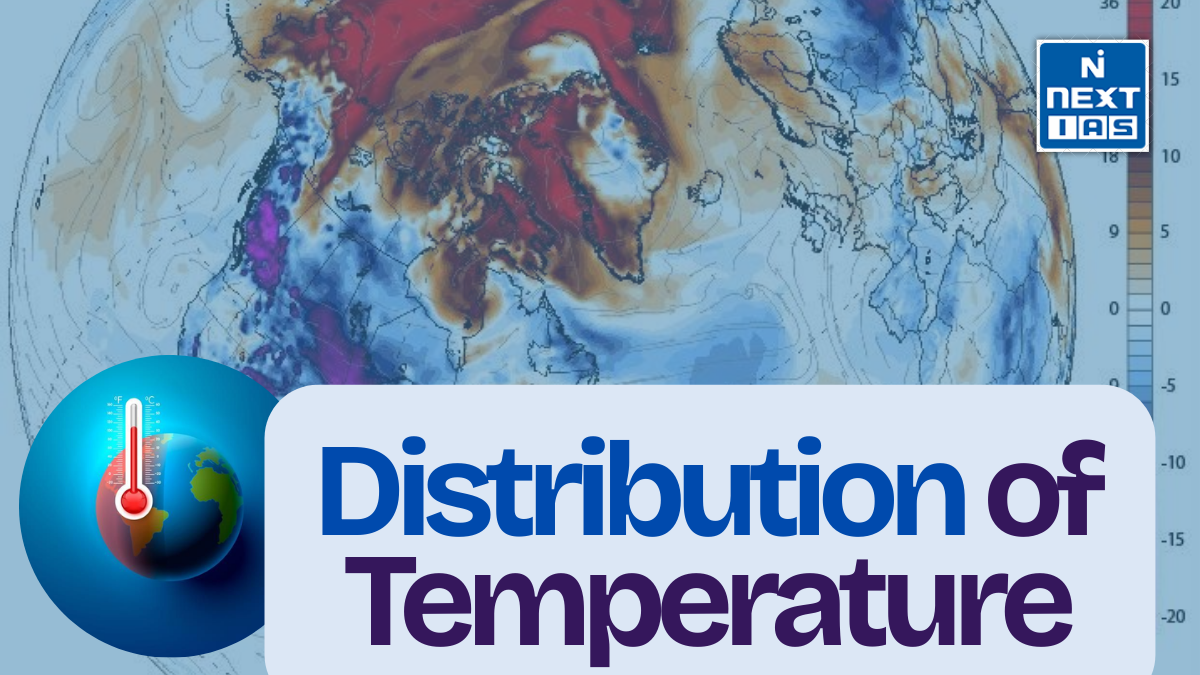
The Earth’s rotation refers to its spinning around its axis, taking approximately 24 hours, causing day and night. Revolution is the Earth’s orbit around the Sun, taking about 365.25 days, responsible for the changing seasons. Both movements are crucial in shaping life on Earth and influencing global climates.
About The Rotation and Revolution of Earth
- The Earth undergoes two primary movements: rotation and revolution.
- Rotation refers to the Earth spinning around its axis, an imaginary line running from the North to South Pole.
- This takes approximately 24 hours, creating day and night. The rotation causes the apparent movement of the sun across the sky, with the sun rising in the east and setting in the west.
- It also influences the planet’s weather patterns due to the Coriolis effect.
- Revolution is the Earth’s orbit around the Sun, taking about 365.25 days to complete one full cycle. This movement, combined with the tilt of Earth’s axis, is responsible for the seasons.
- As Earth orbits the Sun, different parts of the planet receive varying amounts of sunlight, leading to changes in temperature and climate, which define spring, summer, fall, and winter.
- Together, these movements shape the environment and life on Earth, influencing timekeeping, seasons, and weather systems.
Diagram of Rotation and Revolution of Earth
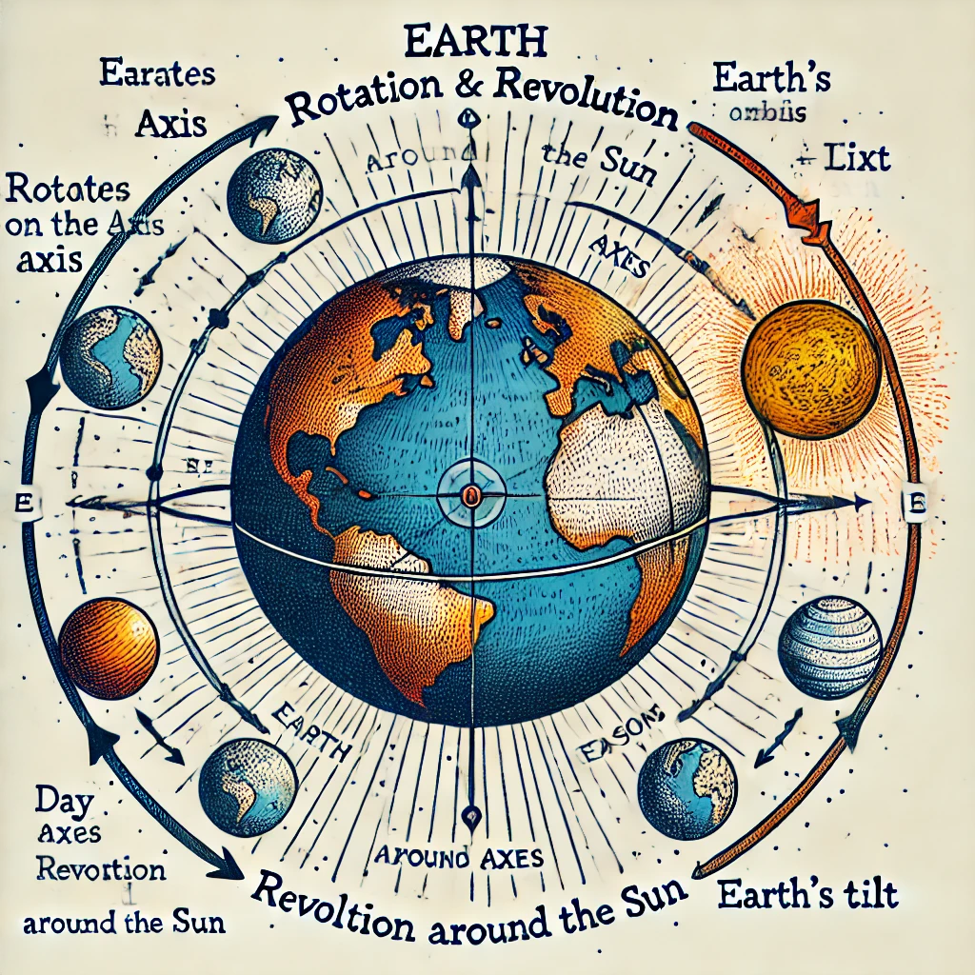
Significance of The Rotation and Revolution of The Earth
The rotation and revolution of the Earth are fundamental to understanding many natural processes that shape life on our planet. Here’s their significance:
Earth’s Rotation
- Day and Night Cycle: The Earth’s rotation on its axis causes day and night. As the Earth spins, different parts of the planet are exposed to the Sun, creating daylight, while the opposite side experiences night. A full rotation takes approximately 24 hours.
- Weather and Climate Patterns: The rotation influences wind patterns, ocean currents, and atmospheric circulation. The Coriolis effect, which results from Earth’s rotation, causes winds and currents to rotate in predictable patterns, affecting global weather systems.
- Timekeeping: The 24-hour rotation cycle serves as the basis for our system of timekeeping. Each time zone represents the position of Earth relative to the Sun’s position in the sky.
Earth’s Revolution
- Seasons: The Earth’s revolution around the Sun, combined with the tilt of its axis, is responsible for the changing seasons. As Earth orbits the Sun over the course of a year, different parts of the planet receive varying amounts of sunlight, creating seasonal changes in temperature and weather.
- Length of Year: A complete revolution around the Sun takes about 365.25 days, which we round to 365 days in a year (with a leap year every 4 years to account for the extra 0.25 days).
- Solar Energy Distribution: The axial tilt, combined with Earth’s revolution, determines the angle at which sunlight reaches different parts of the Earth, influencing ecosystems and agriculture by creating seasonal variations in temperature and light.
Effects of The Rotation and Revolution of The Earth
The rotation and revolution of the Earth have profound effects on various aspects of life, the environment, and global systems. Here’s a breakdown of their key effects:
Effects of Earth’s Rotation
Day and Night Cycle
- Earth’s rotation causes the cycle of day and night. A complete rotation takes 24 hours, with one half of the Earth in sunlight (day) and the other half in darkness (night).
- This cycle regulates daily human activities and biological rhythms, influencing sleep patterns and behaviors in living organisms (circadian rhythms).
Coriolis Effect
- Due to Earth’s rotation, moving air and water are deflected to the right in the Northern Hemisphere and to the left in the Southern Hemisphere, creating wind patterns like trade winds, westerlies, and polar easterlies.
- The Coriolis effect also influences ocean currents, which play a significant role in regulating global climate.
Timekeeping and Time Zones
- Earth’s 24-hour rotation defines the basic units of time (hours, minutes, seconds). The Earth is divided into time zones based on its rotation, affecting global synchronization of activities.
- As the Earth rotates, different parts of the world experience sunlight at different times, necessitating time zones to organize human schedules across the globe.
Earth’s Shape and Equatorial Bulge
- The rotation causes a bulge at the equator due to centrifugal force, making Earth slightly flattened at the poles. This is known as the oblate spheroid shape.
- This effect slightly alters gravity, making it weaker at the equator and stronger at the poles.
Weather Patterns
- Earth’s rotation contributes to the formation of weather systems by influencing the movement of air masses and ocean currents.
- The rotation also helps determine wind directions, which, in turn, affect precipitation and temperature patterns.
Effects of Earth’s Revolution
Seasons
- Earth’s revolution around the Sun, combined with its axial tilt of about 23.5 degrees, causes the seasonal changes we experience.
- As Earth orbits the Sun, different parts of the Earth receive varying amounts of sunlight at different times of the year, creating the four seasons: winter, spring, summer, and autumn.
- The tilt of the Earth’s axis means that one hemisphere receives more direct sunlight during half of the year (e.g., summer), while the opposite hemisphere experiences less (e.g., winter).
Length of the Year
- A complete revolution of Earth around the Sun takes approximately 365.25 days, which defines the length of the year. To account for the extra 0.25 days, we have leap years every four years.
Solar Energy Distribution
- The Earth’s revolution affects the distribution of solar energy across the planet, influencing temperature, climate, and ecosystems.
- During summer in one hemisphere, the Sun’s rays hit more directly, leading to warmer temperatures, while during winter, the rays are more spread out, leading to cooler temperatures.
Eclipses
- Eclipses (solar and lunar) occur due to the relative positions of Earth, the Moon, and the Sun as Earth revolves around the Sun.
- A solar eclipse happens when the Moon passes between the Earth and the Sun.
- A lunar eclipse occurs when Earth passes between the Sun and the Moon.
Tidal Forces
- While the Moon has a stronger effect on tides, the position of the Earth in its orbit around the Sun also influences the strength and timing of tides, especially during the spring and neap tides.
- The Sun’s gravity, in combination with the Moon’s gravity, creates high and low tides in the oceans.
Summary of Key Effects
- Rotation: Causes day and night, weather patterns, the Coriolis effect, time zones, and slight shape changes of Earth.
- Revolution: Determines the seasons, length of the year, solar energy distribution, and leads to phenomena like eclipses and tidal variations.
Together, the Earth’s rotation and revolution help create the conditions that sustain life, regulate climate and ecosystems, and shape the natural world.
Way Forward
To enhance understanding and management of Earth’s rotation and revolution, further research on their effects on climate change, agriculture, and ecosystems is essential. Educational initiatives can focus on their role in global weather patterns. Additionally, space exploration may offer new insights into Earth’s movements and their broader impact.
Conclusion
The rotation and revolution of the Earth are crucial for life on our planet. Rotation creates the day-night cycle and influences weather patterns, while revolution, combined with Earth’s axial tilt, generates the seasons. These movements regulate time, climate, and ecosystems, maintaining balance and stability on Earth.
GS - 1
